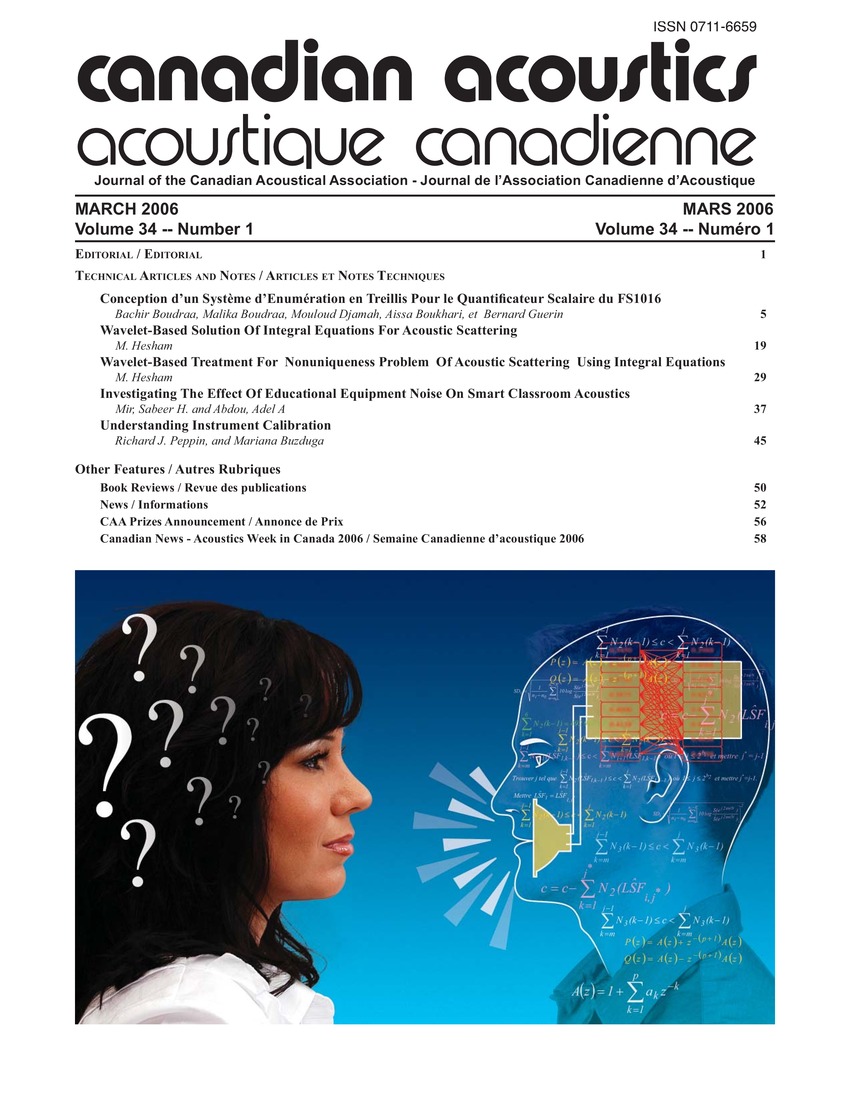Wavelet-based solution of integral equations for acoustic scattering
Keywords:
Acoustic fields, Computation theory, Integral equations, Matrix algebra, Wavelet transforms, Helmholtz integral equation, Moment matrix, Wavelet expansion, Wavelet localized functionsAbstract
In this work, the multi-resolution wavelet analysis is used to solve Helmholtz integral equation for acoustic scattering. The integral equation is solved using moment method with wavelet basis. The unknown field is expressed as a two fold summation of shifted and dilated forms of a properly chosen mother wavelet. The wavelet expansion covers the scatterer surface for distributing the wavelet localized functions. A simpler formulation of a square wavelet operator is proposed and tested in this investigation to obtain the moment matrix. The proposed operator saves some traditional stages of wavelet transform and accordingly a part of the computations required. The square matrix inversion can be implemented easily on different media. The resulting matrix can be made sparse by applying an appropriate threshold. The solution of such sparse matrix saves a large portion of the computational load. The accuracy of the proposed solution is compared to the exact solution of the problem. Computational savings are illustrated for acoustic scattering on a sphere for different wave numbers and wavelet bases order.Additional Files
Published
How to Cite
Issue
Section
License
Author Licensing Addendum
This Licensing Addendum ("Addendum") is entered into between the undersigned Author(s) and Canadian Acoustics journal published by the Canadian Acoustical Association (hereinafter referred to as the "Publisher"). The Author(s) and the Publisher agree as follows:
-
Retained Rights: The Author(s) retain(s) the following rights:
- The right to reproduce, distribute, and publicly display the Work on the Author's personal website or the website of the Author's institution.
- The right to use the Work in the Author's teaching activities and presentations.
- The right to include the Work in a compilation for the Author's personal use, not for sale.
-
Grant of License: The Author(s) grant(s) to the Publisher a worldwide exclusive license to publish, reproduce, distribute, and display the Work in Canadian Acoustics and any other formats and media deemed appropriate by the Publisher.
-
Attribution: The Publisher agrees to include proper attribution to the Author(s) in all publications and reproductions of the Work.
-
No Conflict: This Addendum is intended to be in harmony with, and not in conflict with, the terms and conditions of the original agreement entered into between the Author(s) and the Publisher.
-
Copyright Clause: Copyright on articles is held by the Author(s). The corresponding Author has the right to grant on behalf of all Authors and does grant on behalf of all Authors, a worldwide exclusive license to the Publisher and its licensees in perpetuity, in all forms, formats, and media (whether known now or created in the future), including but not limited to the rights to publish, reproduce, distribute, display, store, translate, create adaptations, reprints, include within collections, and create summaries, extracts, and/or abstracts of the Contribution.


